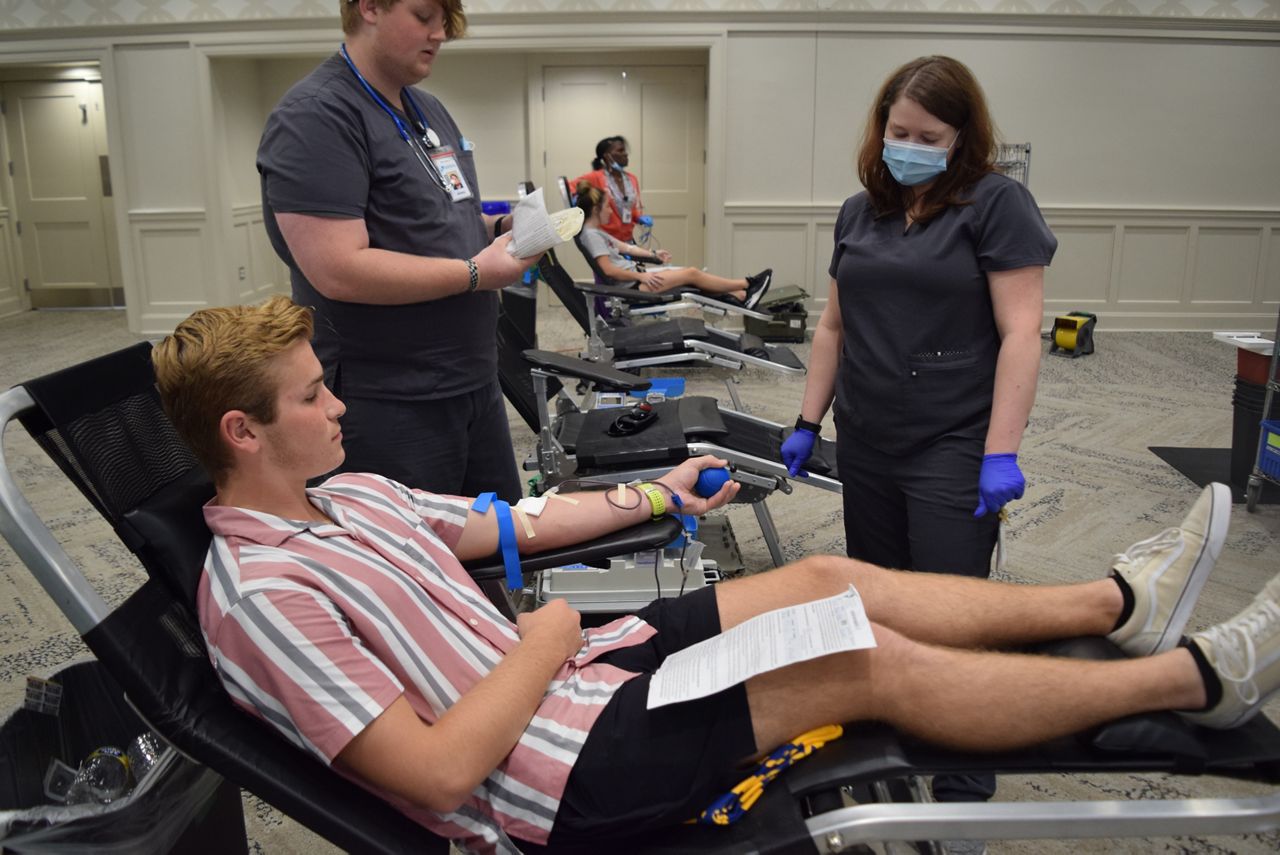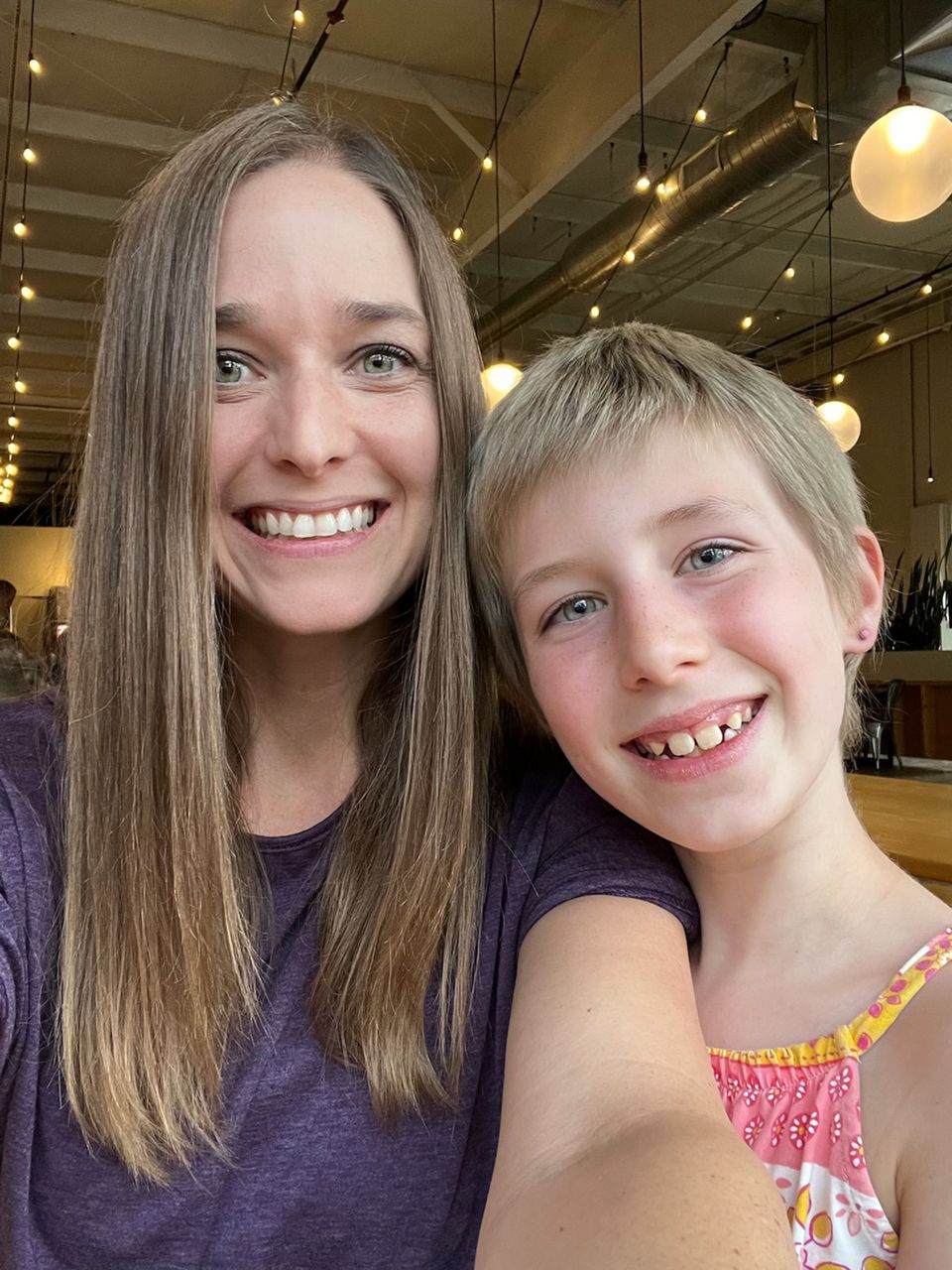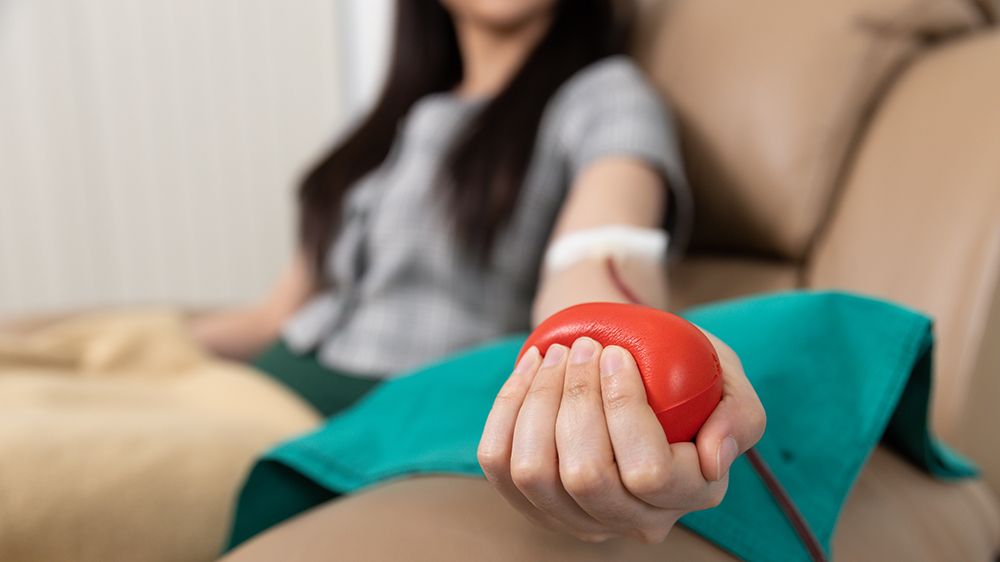DAYTON, Ohio — Blood centers throughout Southwest Ohio are calling for more donors as places like Dayton and Greater Cincinnati face shortages, especially of the most widely used types.
What You Need To Know
- Blood centers in Dayton, Cincinnati have less surplus of Type O
- Type O blood is considered universal
- Donating blood takes about an hour total
- A pint of donated blood can save or improve up to three lives, per Hoxworth Blood Center
On Thursday, Community Blood Center (CBC) in Dayton and Hoxworth Blood Center at the University of Cincinnati both reported having low supplies of Type O blood.
“We are critically, critically low,” said Jackie Marschall, a spokesperson for Hoxworth. “We desperately need blood donors to come in to donate now to help us restock.”
Like other organizations, Hoxworth — which serves 30 hospitals across Ohio, Kentucky and Indiana — has struggled to find donors in recent months. Matters were made worse by a recent shutdown to its transfer data systems meant the organization couldn’t collect blood for two days.
As a result, Hoxworth has only about 30% of its expected need of both Type O-positive and Type O-negative blood types, Marschall said.
Levels of other blood types — Type A, Type B, Type AB, all of which can be positive and negative — are low as well, Marschall said. But the biggest is with Type O, which is considered “universal.”
Medical staff can use Type O-negative in a transfusion for any patient. Anyone with a positive blood type can receive Type O-positive. Type O-positive is the most common blood type.
On average, a person in Greater Cincinnati needs blood at a hospital every five minutes, according to Hoxworth. That means the organization needs to collect blood from about 400 donors each day to meet the demand.
“It’s not always smooth sailing,” Marschall said, who compared donation cycles to a roller coaster. “We have a great community of donors who always answer our calls when we need them. But supply goes up and down every day. The situation today could be completely different five days from now.”
Enough for now, but what about later?
Dayton’s Community Blood Center collects and provides blood to hospitals in a 17-county service area spread across western Ohio and eastern Indiana.
Right now, CBC has three day’s worth of Type O-negative blood, which spokesperson Mark Pompilio called a “moderate” supply. The organization has only a two-day supply of Type O-positive blood.
The goal is to have at least five day’s worth, Pompilio said.
“When we have three- and four-day supplies, even though that’s low inventory, we can manage,” he said. “But when we’re in the ‘red,’ inventory is scarce and we have to act.”
The hospitals have their own supplies on hand, and it’s the job of the blood centers to replenish them.
As of Thursday, most Dayton-area hospitals each have a moderate supply, Pompilio said, but he cautioned that those numbers ebb and flow day-to-day based on need.

“Sometimes we have to rob Peter to pay Paul, so to speak,” he said. “If one hospital is doing well, we can shift what we’re going to send them to another hospital. But with a major spike that throws our projections off, that can throw the system out of equilibrium.”
CBC is a member of the Blood Emergency Readiness Corps, or BERC. It’s a national alliance of blood centers from around the country that have agreed to set aside blood to ship to one another in the event of an emergency.
One example of an activation was the school shooting in Uvalde, Texas.
“It’s a kind of insurance policy, if you will, because it gives us a certain sense of comfort and removes a lot of uncertainty because you know there’s blood sitting there somewhere ready to be transported,” Pompilio said.
In the past, CBC and other blood centers relied on donation events at local businesses and schools. But because of COVID-19, many institutions went remote, cutting into their opportunity for on-the-spot donations. Things are still difficult, Pompilio noted, because many employers haven’t yet brought their staff back to the office.
CBC was banking on a big turnout Wednesday at Miami University in Oxford, Ohio to help cover some ground.
“The students were great and we appreciate everyone who came out,” Pompilio said of the 89 donors, including 59 first-time donors. But that only met 75% of their goal for the event.
“We knew it would be a challenge in the fall, but we felt if we could just get to the fall and get back to a little more normal — where people were returning to work and some normalcy in their schedule — we’d be OK,” Pompilio said. “But as you can see based on today’s numbers, we’re still trailing that goal.”
Like other blood centers, both CBC and Hoxworth are relying on promotions to help entice people to donate blood.
For instance, Hoxworth is handing out a free football sweatshirt to all donors beginning Sunday, Sept. 25 and running through Oct. 16. Anyone who registers to donate with Community Blood Center at any blood drive through the month of September will earn a spot in a drawing to win tickets to the Ohio State/Michigan football game on Nov. 26 in Columbus.
‘An hour of your time could change someone’s life’
For Lindsay Bayliff, 35, donating blood is about giving back to the community.
“It just feels like I’m doing my civic duty,” said Bayliff, who is Type O-positive. “It’s always the one that they’re short on and in need of, so I feel like that’s a big drive for me to give when I can.”
Bayliff started donating in high school. Donors in Ohio can be as young as 16 as long as they have a guardian’s signature. Students can give without parental permission once they turn 17.
Since then, Bayliff has donated at least 15 times, always at CBC’s site on Main Street in Dayton.
“I try to donate as often as I can," she said. "Obviously, life gets in the way sometimes, but when there’s really some big shortage or they call and ask me to come in, I do it.”

The whole donation process takes about an hour from start to finish, Bayliff said. That includes some basic screening to make sure you’re healthy and ready to give blood. The in-chair component takes about 10 minutes.
“Once you sit down, it’s just a quick prick that only lasts for a second,” she added.
Kelly Adkins has donated blood for more than 20 years. She knew her blood was benefiting people in surgery, or maybe those injured in a car crash or another type of accident. But she didn’t know about all the other diseases or conditions that require a patient to receive transfusions – childbirth, anemia, blood disorders, kidney disease.
That changed last when doctors diagnosed her then-9-year-old daughter Chloe with lymphoma, a type of cancer. Chloe required a transfusion as part of her treatment.
“It helped save Chloe’s life,” Adkins said about her daughter who went into remission about six months ago. Chloe's 10th birthday is Saturday.
“You’re not just donating your blood, you’re potentially saving somebody's life, like a child with cancer that needs a transfusion to get better,” Adkins said. “With less than an hour of your time, you can really change the lives of an entire family.”
While many times blood donation can be the difference between life and death, sometimes it’s simply about affording someone a chance at a better quality of life, Marschall said.
Marschall recalled a recent conversation with a young woman with sickle cell anemia who credited her transfusion with helping her function as a person. The woman told her the blood products made her a better mother to her 2-year-old son by enabling her to be there for him in a way she couldn’t otherwise.
A single full donation — one pint — can save or benefit up to three people, per Hoxworth.
“Blood donors are superheroes,” Marschall said. “And right now, the world needs a few more of them right now.”



